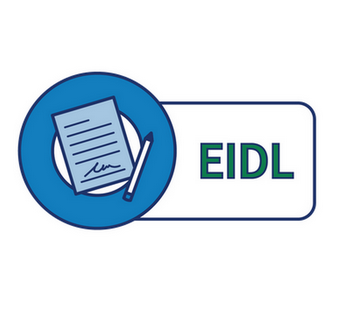One of the most common questions that pop into the minds of individuals, after filing their taxes is how much will I get back in taxes. However, it is inherent that you should understand what tax refund really is. Tax refund is the amount of return on the total amount of taxes that an individual/entities pay to state, when their liabilities are less than the amount of tax that they have paid earlier in the year. The issue regarding the question, how much will I get back in taxes, will be adequately answered, if the correct amount, payable by the government to the individual, is calculated as the surplus of taxes that you have already paid and don’t owe to the state.
Another thing which should precede the matter of discussing how much will I get back in taxes, is the fact that if you really are eligible for applying or receiving tax returns. After being informed about the characteristics of your income that affect your gross tax return, it is also crucial that you understand that if you are eligible for receiving the tax returns or not. In some cases individuals, who receive hourly or daily wages, file tax returns and receive a reasonable amount in returns. Others, however, fail to receive the amount of tax returns that is owed to them by the government.
This unfortunate situation can arise if the amount of withholding, by an employer, for the payable taxes can cause some individuals to file for tax refunds in a lower amount, as the federal taxes have already been deducted from their salaries and the amount is greater than what is actually liable for these employees. In order to find out the amount withholdings, subtract the net amount paid to the employee from the gross income earnings.
To know how much will I get back in taxes, you must understand the calculated difference between the amount which is withheld and the amount that is payable to the employee each month, as well as the amount owed by the individual to the government. This procedure will efficiently provide the individual a chance to save the amount of taxes payable each year to pay the amount owed to the government.
If you are thinking about how much will I get back in taxes, another thing which can affect your eligibility is that if you are paying a surplus amount of taxes to the government or not. If not, then you are not eligible for any tax refunds. However, the taxpayers who have paid taxes, which sum up to a total higher than the amount of tax payable by them in a year, are liable to receive a tax refund at the end of the year.
Important Tax Return Factors
After the completion of the tax filing process, most people start thinking `how much will I get back in taxes`. It is natural to look forward to a monetary reward after dutifully filing your taxes. But in order to understand the concept of tax returns, it is crucial to gather information about the tax refund process. It is extremely important to gain basic knowledge about tax returns before you can comprehend the answer to the question, `how much will I get back in taxes?’. This understanding will not only provide you with an awareness of the main elements involved in the tax system, but will also enable you to calculate the tax refund amount. Following are the tax return characteristics that help you understand how much will I get back in taxes.
1) Personal Allowance
The amount of income, which is especially entailed and withheld for federal taxes can have a huge impact on the size of your tax refunds and is most commonly known as personal allowance. Before you start worrying about how much will I get back in taxes, remember your claim on the W-4 form, regarding the personal allowance. If an individual doesn’t claim personal allowance on this form, then they have a minuscule chance of getting a sizeable amount of tax returns, which can increase the total amount of funds received at the end of the year. However, those who claim biannual allowances will receive lesser amount of money.
2) Filing Jointly or Separately
Post marriage, some people file their taxes along with their spouses. This can cause the overall amount of tax refund to be calculated on their liabilities minus the taxes that they paid for the same financial year. However, if they choose to file their taxes separately from their spouse, for the tax refunds, then they are likely to receive a larger amount of tax turn amount, which is calculated based on their earnings and expenses and liabilities. The total refund of a household increases if the husband and wife file separately for the tax refund. If you are wondering how much will I get back in taxes and want to enhance the refund amount, you will be satisfied at the end of the year, when you receive a hefty amount of tax return.
3) Total Annual Income
If you are wondering `how much will I get back in taxes`, it is important to understand that the one of the most common factors that affects the amount of tax refund is the amount of gross income that you accrue annually. The annual income tax, that a person has to pay annually, is calculated on their annual income and is usually between 10-36% of the gross annual income of the individual. This gross amount of the annual income incorporates the overall earnings of a person that includes tips, wages, and loss/gain in business, income gained by self-employment or freelancing, earnings through rent, shares, intellectual property and more. If you are thinking how much will I get back in taxes, if I earn a passive income, remember that it is included in the gross annual income too.
4) Contribution to the Internal Service Revenue (IRS)
How much will I get back in taxes is a question on everyone’s mind. To understand the full scope of this concept, you must remember that the payments that you make in your retirement plans, individually or in the account of an employer-sponsored retirement plan, can reduce the amount of money that an individual owes. Fortunately, this can increase the amount of tax refund. But it’s not completely dependent on the amount of money that an entity owes; filling status and the amount of annual income can have a massive direct impact on the total sum.
5) Federal Taxes
Every month, a federal tax amount is deducted on your paycheck. This is the amount that you owe to the government and it is a part of your total income that you owe to the state. This cannot be avoided as it is automatically deducted from your salary, before it even reaches your bank account. However, people, who are self-employed or are freelancers, have to manually transfer this amount, owed to the state, to the Internal Service Revenue (IRS). Although, they don’t have to pay this amount every month like standard employees, this amount is paid at the end of each financial year and the tax refund is actually the amount which isn’t due to the taxpayer. Thus this answers the question how much will I get back in taxes, pertaining to the freelancers and self-employed personnel.
6) Dependants
The number of dependants, each individual has, can have a great impact on the overall amount of tax return. If you have been wondering how much will I get back in taxes, having children or other dependants can be a huge contributor, when you are calculating the amount of tax refund that you will receive at the end of the year. The amount of tax is automatically reduced if an individual has higher amount of dependents and this is reflected in a bigger tax fund payment check. As per 2015 tax refunds, the households receive a tax deduction of $3500, if they include at least 5 or more dependents.
Other important factors that will enhance your tax refund amount along with IRS contributions, filing status and number of dependants are higher education, care of dependants, credit amounts on home improvement projects.
Are You Wondering How Much Will I Get Back In Taxes? Familiarize Yourself with These Key Factors
The Internal Revenue Service (IRS) wants the taxpayers to familiarize themselves with these important factors before they file for their tax refunds.
- Before you start thinking how much will I get back in taxes, the refund amount has to be requested to be transferred to your retirement or savings accounts. An individual has to specify the account type in the Form 8888. This requirement provides a safe account which can be accessed if a need arises.
- The IRS gives every taxpayer three options for tax returns. The available options are direct deposit in your account, a check, or a savings bond, which has the same amount as that of the tax refund.
- Most of the taxpayers, who are wondering `how much will I get back in taxes`, also worry about the time it takes for processing. The duration for tax refund processing is dependent on the correct filing procedure, as well as the provision of the complete information required by the agency. Electronically filed forms have a greater chance of resulting in earlier tax refunds, as the IERS employees don’t have to enter the data manually into the computers, which happens if the taxes are filed in the form of papers.
- The tax refund status can be traced by contacting the IRS on their hotline `800-829-1954`, which is dedicated for the queries about tax refunds. This number can be reached through a phone from any destination and allows you to inquire about your tax return status.
- Another service, which allows you to find the answer to the question `how much will I get back in taxes` and its time duration, is the online service provided by the IRS. In order to track down your tax refund payments, access the official website of the IRS, i.e. IRS.gov.
- If you are anxiously waiting for your tax refunds and all you can think about is `how much will I get back in taxes`, there are several factors that can delay the tax refund status. These factors are incomplete or inaccurate filing information as well as late tax submission. In order to avoid this, taxpayers should be very careful, while they are filling out the tax forms and are filing their document.
- In some cases, you might receive a refund amount, which is larger than you are owed. If that happens it is better to wait for check encashment, until you receive a notice that states the explanation regarding the amounts and heads.
- The IRS has provided another facility to the taxpayers that allow them to efficiently track their tax refund progress through an application, launched by the IRS. This Smartphone application `IRS2Go` is used to track the progress of the tax returns and to file any compliant regarding it. The application is available on both the Android and Apple store and can be used to lodge complaints ad queries with the agency.
- If, after months of wondering how much will I get back in taxes, you receive an amount less than what you are owed, use the money that you have already received at your convenience. The other part of the money, owed to you by the IRS, will be sent to you after some time. If two weeks pass and you don’t receive the other part of the money or any progress report or notice, then you should inquire about it through the online IRS service or the official hotline dedication for helping taxpayers.
- If you have entered an incorrect address in your documentation or have changed your residence after filing the tax forms, the check can get lost in the mail. To deal with this problem, report the relevant authorities at the IRS and you will soon receive a refund after an appropriate waiting period.
How Much Will I Get Back In Taxes – The Percentage Amount of Income Tax Return
The following section will help you understand the answer to the question, how much will I get back in taxes, in a systematic way. Each section of tax refund is divided into categories and is represented in the form of percentages to help you understand them better.
i. The Composite Refund
Some individuals receive 100% tax refund. This usually happens when the taxpayers diligently file the tax forms with correct format and accurate information, which is reliable and is attached with the proper documentation and verified signatures. The IRS also sets a certain amount that can be calculated in order to find out the complete percentage of income tax refund, received by an individual.
- Single individual, 100% refund on earnings less than $9,370.
- Head of a household, refund on all withheld taxes on earnings less than $12,000
- Married individual, under the age of 65, 100% refund on all withheld taxes, for filing jointly and earning less than $18,700.
ii. Child Tax Credit
This is a helpful option for the parents that are making less money than is needed to support a child in an adequate way. On the basis of child tax credit, the tax refund amount is increased for an individual, if he doesn’t owe taxes to the state. Such an individual can file acclaim of a $1000 per child or dependant. However, if the income of such person increases than the qualifying level for child tax credit, it will reduce the amount of refund.
- Single Parent/ Widow/ Widower/ Head of Household, Earning less than $75,000 – 100% Child Tax Credit.
- Married and filing separately, earning less than $55,000 – 100% Child Tax Credit.
- Married and filing jointly, earning less than $110,000 – 100% Child Tax Credit.
If your gross income is slightly higher than the qualifying amount of the child tax credit, you can still apply for a portion of it.
iii. Earned Income Tax Credit
If a taxpayer is aspiring to gain a greater amount in tax refunds than what they originally paid in the form of taxes, the earned income tax credit is the ideal option for them. This is suitable for a person, who has dependable individuals (biological/ adopted children) on them. Siblings and their children are also included in the dependent category and can be considered your dependents. If you are childless, you can still qualify for the earned income tax credit. Moreover, if the number of children under 19 years of age increases, the amount of tax refund increases at a direct pace, according to a certain criteria.
iv. Payroll Taxes
The tax tables, published by the IRS, determine the calculation of withholding amount of taxes, which can be used to calculate the amount of taxes levied on a person’s paycheck. The taxes on an individual’s gross income is based on ten tables, and is usually from 10%-35% of the withholding amount.
These are the main factors that can affect the amount of tax refund that you receive. In order to comprehensively answer the question `how much will I get back in taxes` and to evaluate your eligibility, thoroughly read through all the factors that can affect the aforementioned variables.




















Post comment
You must be logged in to post a comment.